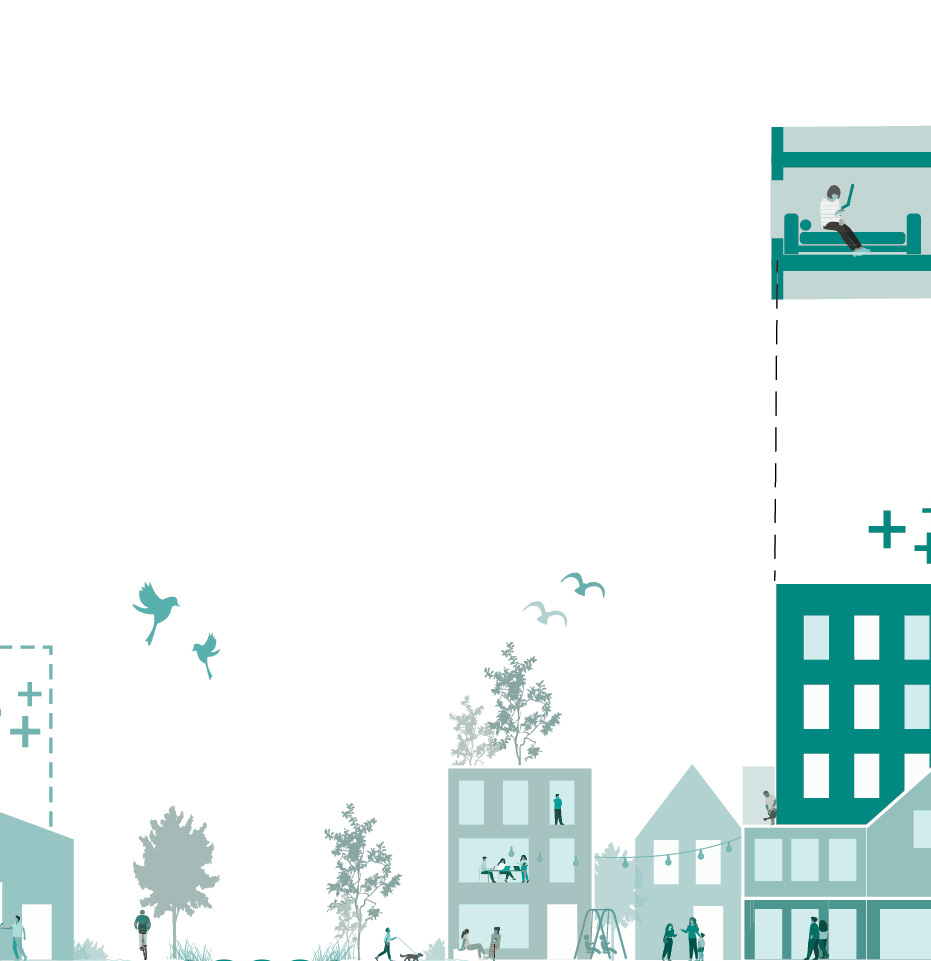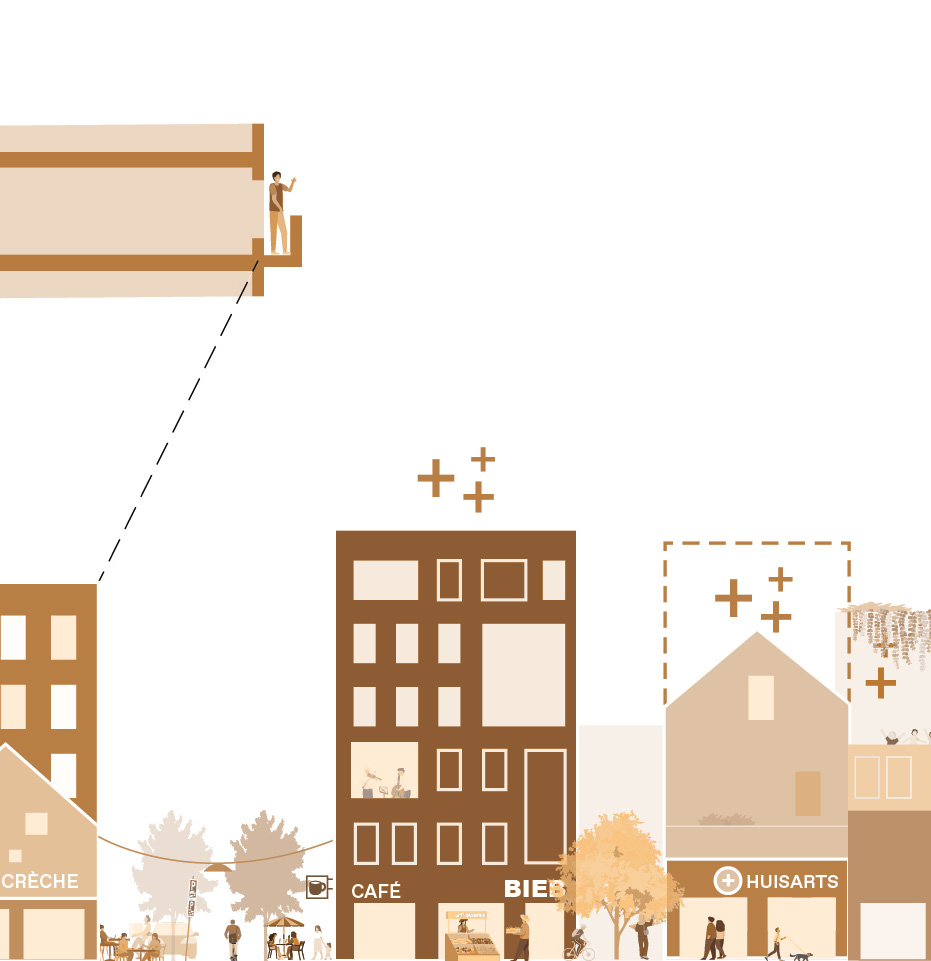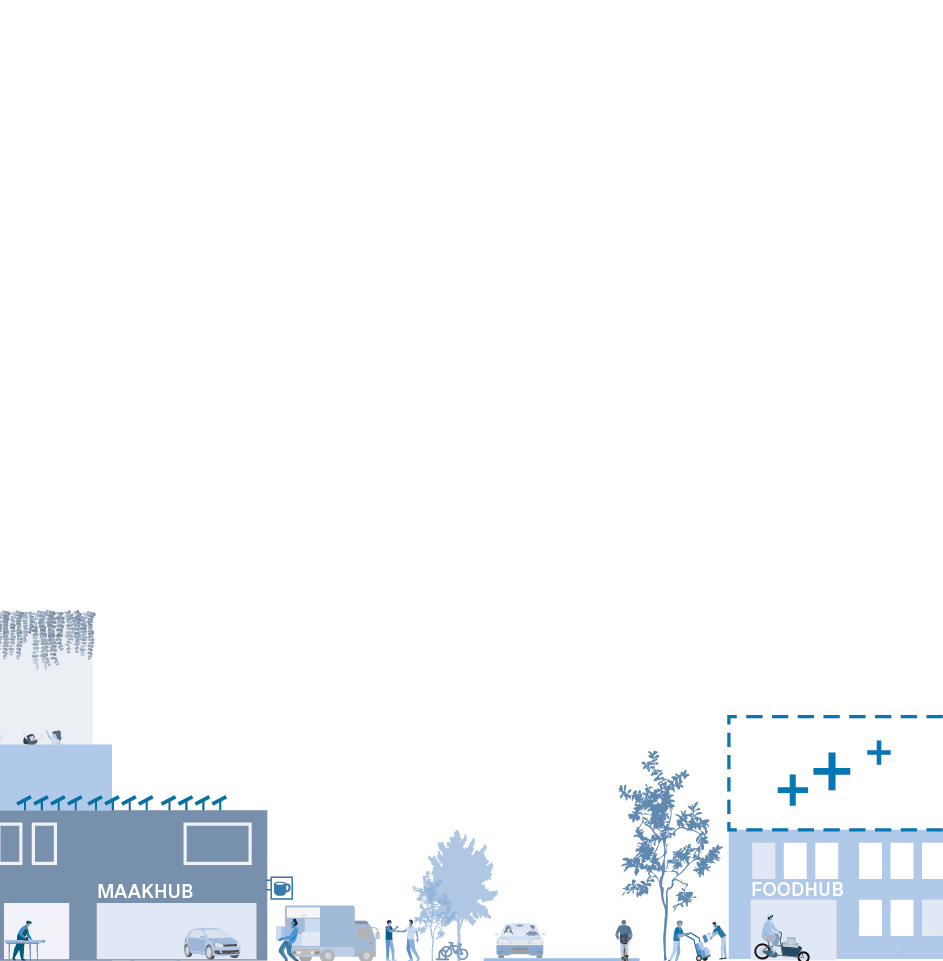
How do you maintain urban identity in the face of rapid change?
Utrecht Quality Plan
In 2021, Utrecht City Council adopted the Utrecht Spatial Strategy 2040 (Ruimtelijke Strategie Utrecht , or RSU 2040) plan, opting to develop Utrecht as a 10-minute city. Outside the city centre, new hubs would bring amenities closer to residents, with homes, offices and meeting places located at easily accessible intersections. De Zwarte Hond collaborated with the Municipality of Utrecht on a quality plan that encapsulates the vision of a great quality of life in both the existing and growing city. Based on discussions about the future, it appears that Utrecht residents value a people-centred city, with space for diversity and encounters and a pleasantly green living environment. Therefore, 11 city-wide principles have been developed and supplemented with inspiring visions. These principles form an assessment framework for spatial plans, promoting a diverse and future-proof city. Implementation varies from location to location, depending on identity, density and urban dynamics, whether categorized as hush, buzz or fizz. The neighbourhood and structure framework helps to guide use and design, while allowing room for local identity. Green-blue routes and city streets connect neighbourhoods, town centres and the landscape. In this way, Utrecht is growing in a manner that suits its character: it is becoming more compact, more connected and more people-focused, but it is still very much Utrecht.
data
- Location
- Utrecht, NL
- Size
- n.v.t.
- Client
- Gemeente Utrecht
- Discipline
- Urban Design
- Program
- Design Research, Urbanization Strategy
- Period
- 2023
- Status
- Completed


Pre-war residential area

Urban hub

Business area
Visions of inspiration
Inspirational visions have been developed based on the 11 principles. These will help steer the quality of the living environment so that Utrecht can grow while remaining true to itself. The character, history and experience of each location mean that urban planning principles are applied in different ways. This results in localized, customized solutions based on city-wide principles. Not every principle has the same effect everywhere.
For example, an attractive plinth looks different in a residential neighbourhood than in a busy urban hub. The translation of an urban planning principle into a spatial intervention depends on the location’s identity, the area’s density and its urban dynamics: hush, buzz or fizz. It is this context that determines the approach to applying the principles and leads to area-specific solutions. This diversity is characteristic of Utrecht, both in the existing city and in new developments, and it is precisely this that Utrecht residents value so much.

A framework for urban dynamics
In the future, the distribution of hush, buzz and fizz in Utrecht will change. The city will have multiple urban centres, with the vibrancy concentrated primarily around intersections in mixed-use (highly) urbanized areas. City streets will connect these intersections with the historic city centre. Green-blue routes – boulevards featuring water and vegetation – will connect neighbourhoods and workplaces with the surrounding landscape. Traffic connections will ensure that the city remains accessible to various modes of transport.
The identity and dynamism of a place determine its spatial quality














